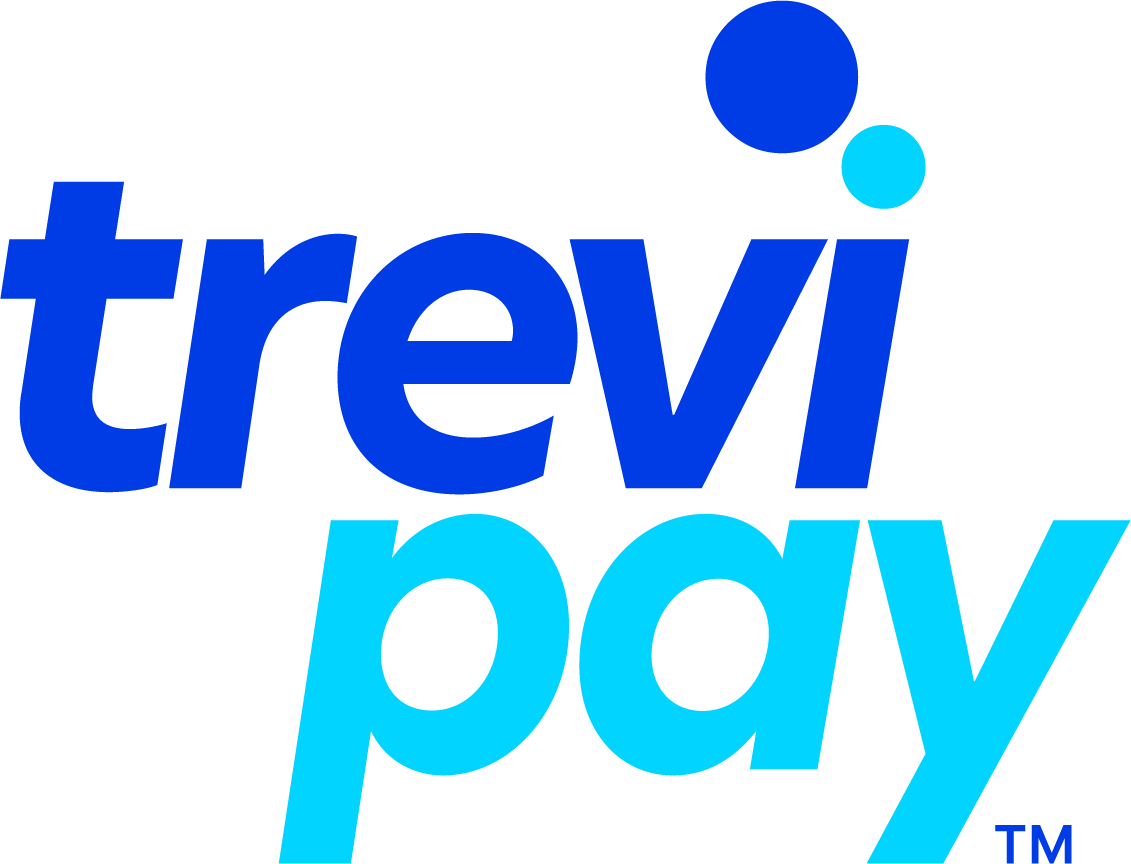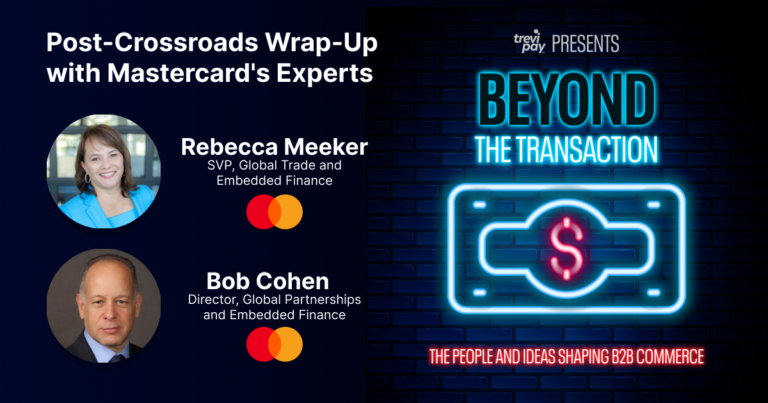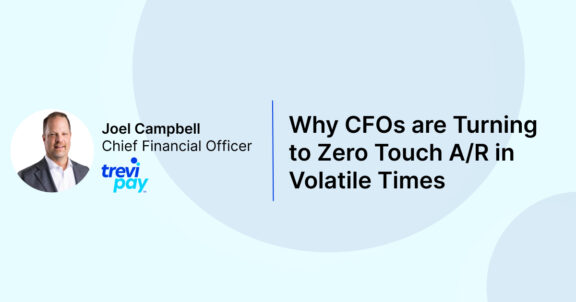In the rapidly changing B2B commerce space, payment preferences are shifting as buyers demand more convenience and flexibility, while sellers need efficient ways to manage diverse customer segments. Embedded finance— the embedding of financial services into non-financial platforms—promises to meet these demands, offering a frictionless experience for both buyers and sellers.
As businesses grow and operate in an increasingly digital economy, the payments process has become a critical touchpoint in buyer-seller relationships. TreviPay’s Universal Acceptance solution streamlines payments and offers flexible financing options for different customer segments. Leveraging Mastercard’s payments acceptance network, this solution optimizes payment processes and can enhance operational efficiency for millions of merchants globally.
But how exactly can embedded finance transform B2B payments? Let’s dive deeper into the key benefits of embedded finance and its role in transforming the B2B payments experience for both buyers and sellers.
What B2B Buyers Want: Flexibility and Speed
Today’s B2B buyers prioritize speed, convenience and flexibility in their payment options. Whether purchasing infrequently with smaller average order values (AOV) or making larger, recurring purchases, their expectations are clear—they want seamless transactions that align with their operational needs.
For infrequent buyers with low AOV, traditional payment methods such as corporate credit cards or commercial cards are often the preferred option. These transactions are low-cost and low touch, allowing buyers to focus on their core business without worrying about complex financing terms or payment delays. Credit card transactions also offer immediate payment processing, giving businesses real-time visibility into their cash flow.
However, as businesses move toward more frequent buyers with larger AOVs, payments become more complex. These customers typically expect to pay by invoice or purchase order (PO) and often require extended credit terms to manage their cash flow effectively. Additionally, they look for options such as variable pricing, bulk purchase discounts, and the ability to manage transactions across multiple sales channels. Many of these organizations also have purchasing teams, making purchase controls, customized credit limits, and detailed invoicing processes essential.
What Sellers Need: Optimizing Payment Methods by Segment
To meet the needs of various buyer segments, sellers must implement a dynamic payments strategy. A comprehensive payments strategy requires effective buyer segmentation. Segmentation allows sellers to analyze buyer behavior and align their payment options accordingly. This involves offering the optimal payment method for each buyer based on their buying behavior and frequency. For infrequent buyers, a straightforward and low barrier method like card payments works best. Sellers can benefit from faster payment processing while reducing the administrative burden associated with more complex payment methods, like invoicing.
On the other hand, for frequent buyers who place larger orders or operate on a recurring schedule, offering payment by invoice or PO can be crucial. Additionally, providing financing options tailored to each buyer can help sellers improve the buying experience and increase loyalty. Sellers who offer embedded finance solutions should also consider offering buyers customized credit lines, term financing and integrated invoicing, making it easier for buyers to manage their cash flow while allowing sellers to close sales faster.
By embedding finance solutions into their payment workflows, sellers can automate these offerings and provide tailored payment methods for every buyer segment. This ensures smoother transactions across the board and allows sellers to tap into new revenue streams by offering additional financing options. Moreover, embedded finance solutions reduce manual processing costs, freeing up resources that can be allocated to more strategic areas of the business.
How TreviPay and Mastercard Help Transform B2B Payments
TreviPay, in partnership with Mastercard, is at the forefront of transforming B2B payments by creating a unified experience that benefits both buyers and sellers. Universal Acceptance allows businesses to streamline payments across multiple platforms by integrating invoicing, financing and buyer onboarding, making transactions easier and more efficient for both buyers and sellers.
With Universal Acceptance, B2B buyers enjoy:
- Flexible financing and credit options: Buyers can access credit lines tailored to their purchasing patterns, giving them the flexibility to manage cash flow more effectively.
- Simplified payments with invoice and POs: Buyers can streamline their procurement process with invoice-based payments. Payments are fully integrated into their systems, ensuring that each invoice references the corresponding Purchase Order.
- Greater control over purchasing processes: Buyers gain greater visibility into their transactions and admins can manage individual spending limits for users and groups.
For sellers, Universal Acceptance provides a number of key benefits, including:
- Optimized payment processing by customer segment: Sellers can offer tailored payment methods and financing options that suit each buyer’s purchasing behavior, resulting in a more personalized customer experience.
- Increased operational efficiency by reducing manual invoicing: Automated and integrated invoicing and payment reconciliation reduce errors and minimize the need for manual intervention, freeing up time for the finance team.
- Improved cash flow with access to credit and financing options: Sellers can offer financing options that ensure faster payment while reducing the risk of late payments or default, thus improving their cash flow and working capital.
- Rapid Integration: Sellers can easily extend net terms financing to their B2B customers with little to no integration work, if the supplier is already accepting credit cards. The familiar payment system reduces the time to implement and integrate. With Universal Acceptance, the integration work is removed, greatly reducing upfront costs and time to market.
Embedded Finance: The Future of B2B Payments
As B2B commerce continues to evolve, the integration of embedded finance and invoicing will be critical in shaping the future of payments. Whether you’re looking to simplify transactions for low-touch buyers or offering complex financing solutions to frequent buyers, embedded finance through Universal Acceptance allows your business to meet those needs seamlessly.
Embedded finance will not only streamline the payment process but also enable greater collaboration between buyers and sellers. By embedding financial services into their platforms, businesses can create efficient payment experiences that provide value for both buyers and sellers. Robust purchasing controls paired with trade financing increase buyer loyalty and encourage buyers to buy more, more frequently from your business.
Learn more about how embedded finance through Universal Acceptance can transform your B2B payments strategy by downloading our eBook.

Read our eBook to learn how how embedded finance through Universal Acceptance can transform your B2B payments strategy






